| ________________
CM . . .
. Volume XV Number 3. . . .September 26, 2008 
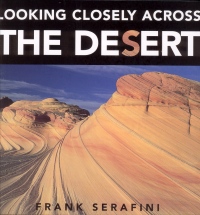 |
Looking Closely Across the Desert. (Looking Closely).
Frank Serafini.
Toronto, ON: Kids Can Press, 2008.
40 pp., hardcover, $16.95.
ISBN 978-1-55453-211-7.
Subject Heading:
Desert biology-Juvenile literature.
Preschool-grade 2 / Ages 4-7.
Review by Gail Hamilton.
***½/4
|
| |
|
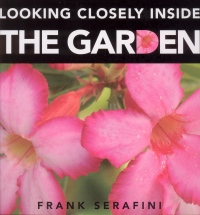 |
Looking Closely Inside the Garden. (Looking Closely).
Frank Serafini.
Toronto, ON: Kids Can Press, 2008.
40 pp., hardcover, $16.95.
ISBN 978-1-55453-210-0.
Subject Headings:
Plants biology-Juvenile literature.
Garden animals-Juvenile literature.
Preschool-grade 2 / Ages 4-7.
Review by Gail Hamilton.
***½/4
|
| |
|

excerpt:
The towering saguaro cactus stands guard over the desert. It can grow taller than a house and weigh over two tons. But the cactus grows slowly. It takes fifty years for a saguaro cactus to sprout flowers for the first time.
When in bloom, the saguaro looks as if it is wearing a white flower bonnet. Each flower blooms once, opening at night and closing the next morning. During the night, long-nosed bats dip their tongues into the flower's sweet nectar. Like bees, the bats carry pollen to all the other flowers they visit. (From Looking Closely Across the Desert.)
Young readers can explore four different habitats—the forest, the shore, the desert and the garden—in this new series designed to encourage curiosity and foster an appreciation of nature in the hope that children will want to protect Earth's fragile environment. Through marvellous close-up photography, Serafini shows readers some detailed characteristics of a variety of plants, rocks and animals. In each case, he poses a question, in poem form, and offers two choices. For example, "Look very closely. What do you see? A pirate's hook? A purple ribbon? What could it be?" Readers are challenged to examine a portion of the photograph before guessing. On the next page, Serafini reveals the photograph in its entirety and provides a general description of the object and its habitat. Questions and answers are given on alternate double-page spreads.
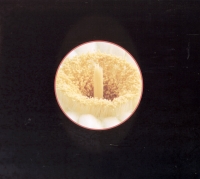 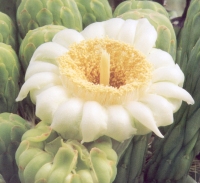
Nine natural objects are highlighted in each of the books. The desert habitat features a prickly pear cactus, a spiny lizard, a sandstone wave, a saguaro cactus flower, a desert bighorn sheep, a yellow poppy, an agave plant, a diamondback rattlesnake and a white sand dune. Garden objects include a monarch butterfly, a princess flower, a Mormon cricket, an earthworm, a Roman snail, a pumpkin, a strawberry, a spider web and an ear of corn. Both books end with a large photograph of the featured habitat.
The sharp details and vivid colours of the photographs are sure to appeal to readers. It's just a shame that there are only nine objects in each book, for readers will surely want more.
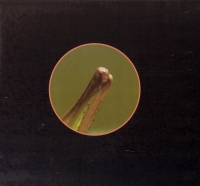 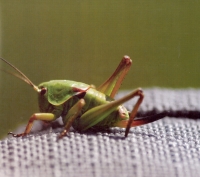
Though the incredibly beautiful photographs steal the show, the accompanying information will certainly enhance one's enjoyment of the books and will, perhaps, inspire readers to take a closer look at the many wondrous works of nature in any habitat.
Highly Recommended.
Gail Hamilton is a teacher-librarian in Winnipeg, MB.

To comment
on this title or this review, send mail to cm@umanitoba.ca.
Copyright © the Manitoba Library Association. Reproduction for personal
use is permitted only if this copyright notice is maintained. Any
other reproduction is prohibited without permission.
NEXT REVIEW |
TABLE OF CONTENTS FOR THIS ISSUE
- September 26, 2008.
AUTHORS |
TITLES |
MEDIA REVIEWS |
PROFILES |
BACK ISSUES |
SEARCH |
CMARCHIVE |
HOME |





